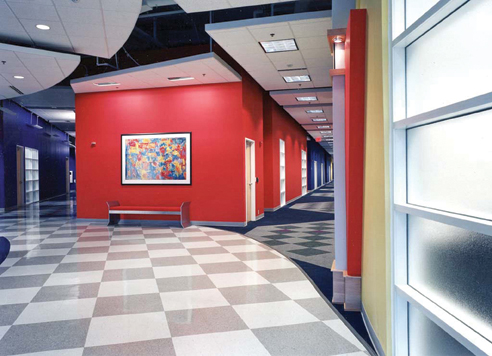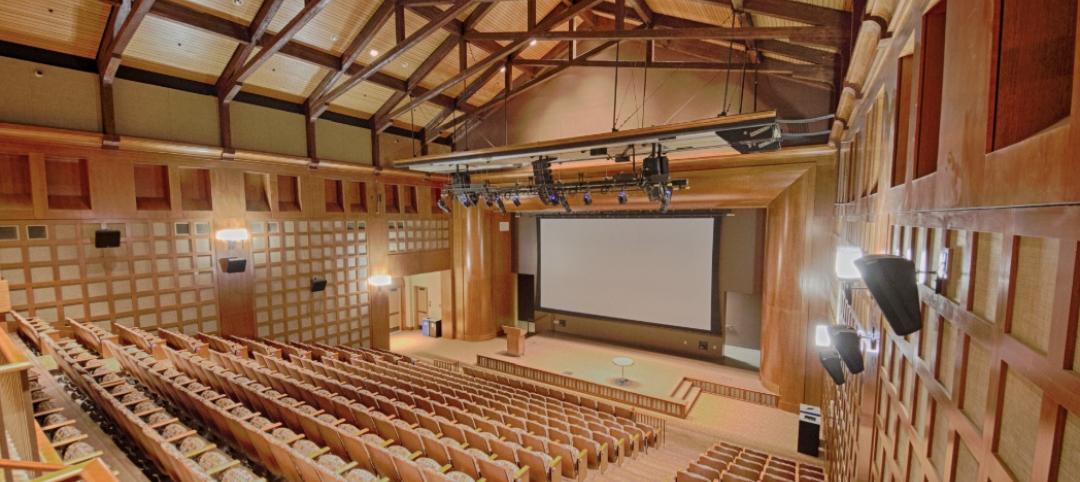Building Design+Construction talked to experts from Hixson Architecture Engineering Interiors for their advice on renovating whole office buildings and office interiors: Colleen McCafferty, LEED AP, Corporate Interiors Team Leader; Bruce F. Mirrielees, AIA, SVP of Project Management; and John Hudson, Director of Client Development. Here are 11 lessons from their experience that may help you in planning your clients’ next office renovation projects.
11 Tips for Office Renovation Success
1. Ask the hard bottom-line questions first.
2. Take a realistic look at the surrounding neighborhood.
3. Look for local or regional economic incentives.
4. Develop an exit strategy for the property.
5. Create a communication plan for the current occupants.
6. Capitalize on the building’s strengths.
7. Determine what features can and should be saved.
8. Enhance the property’s curb appeal and interior finishes.
9. Have a clear picture of who the potential tenants might be, and design for their needs.
10. Don’t try to do everything at once.
11. Make sustainability part of the process.
View all 11 tips on one page.
Related Stories
| Jul 18, 2014
Top Contractors [2014 Giants 300 Report]
Turner, Whiting-Turner, Skanska top Building Design+Construction's 2014 ranking of the largest contractors in the United States.
| Jul 18, 2014
Engineering firms look to bolster growth through new services, technology [2014 Giants 300 Report]
Following solid revenue growth in 2013, the majority of U.S.-based engineering and engineering/architecture firms expect more of the same this year, according to BD+C’s 2014 Giants 300 report.
| Jul 18, 2014
Top Engineering/Architecture Firms [2014 Giants 300 Report]
Jacobs, AECOM, Parsons Brinckerhoff top Building Design+Construction's 2014 ranking of the largest engineering/architecture firms in the United States.
| Jul 18, 2014
Top Engineering Firms [2014 Giants 300 Report]
Fluor, Arup, Day & Zimmermann top Building Design+Construction's 2014 ranking of the largest engineering firms in the United States.
| Jul 18, 2014
Top Architecture Firms [2014 Giants 300 Report]
Gensler, Perkins+Will, NBBJ top Building Design+Construction's 2014 ranking of the largest architecture firms in the United States.
| Jul 18, 2014
Top Architecture/Engineering Firms [2014 Giants 300 Report]
Stantec, HOK, and Skidmore, Owings & Merrill top Building Design+Construction's 2014 ranking of the largest architecture/engineering firms in the United States.
| Jul 18, 2014
2014 Giants 300 Report
Building Design+Construction magazine's annual ranking the nation's largest architecture, engineering, and construction firms in the U.S.
| Jul 17, 2014
A new, vibrant waterfront for the capital
Plans to improve Washington D.C.'s Potomac River waterfront by Maine Ave. have been discussed for years. Finally, The Wharf has started its first phase of construction.
| Jul 17, 2014
A harmful trade-off many U.S. green buildings make
The Urban Green Council addresses a concern that many "green" buildings in the U.S. have: poor insulation.
| Jul 17, 2014
A high-rise with outdoor, vertical community space? It's possible! [slideshow]
Danish design firm C.F. Møller has developed a novel way to increase community space without compromising privacy or indoor space.

















